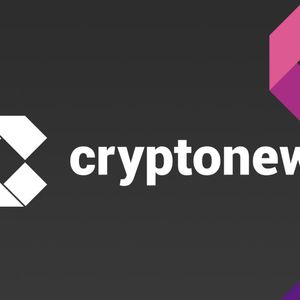A recent post by Paul Barron, a respected analyst in crypto and financial media, brought renewed attention to Ripple’s transformation. Barron noted that the XRP Ledger, once dismissed by critics as a “zombie blockchain,” is now being recognized by Forbes as a $180 billion infrastructure leader. Barron’s remarks came in response to the publication’s latest feature on Ripple’s evolution . The report detailed Ripple’s transformation into an infrastructure powerhouse, highlighting its feats and acquisitions, and the growing role of XRP as a core liquidity asset supporting tokenized finance across institutional markets. However, Barron questioned why such recognition arrived only after the company had already achieved significant progress. His message suggested that Forbes may be late in recognizing Ripple’s strategic progress, noting that “isn’t Forbes supposed to predict winners, not report on them after they’ve already won?” Update: @Forbes just discovered that @Ripple went from "zombie blockchain" to a $180B infrastructure play. Wait, isn't Forbes supposed to predict winners, not report on them after they've already won? After years in regulatory hell, Ripple is now: Acquiring licensed custody… — PaulBarron (@paulbarron) October 31, 2025 Ripple’s Expanding Institutional Role According to Barron, Ripple has repositioned itself in recent years by acquiring licensed custody and tokenization firms and developing institutional-grade settlement systems. These initiatives strengthen Ripple’s role in providing secure, compliant infrastructure for digital assets. Barron noted that the company is “building institutional-grade settlement rails” and “positioning XRP as plumbing for tokenized finance,” highlighting how XRP’s utility has expanded beyond retail speculation to form part of the underlying structure of financial networks. Ripple’s acquisition strategy signals a long-term plan. By aligning its XRP-powered product offerings with the needs of financial institutions, Ripple has moved closer to becoming a key service provider for institutional payment rails. This shift places XRP at the center of global liquidity operations, giving it a foundation that few other digital assets currently possess. From Regulatory Challenges to Strategic Dominance Barron also alluded to Ripple’s endurance through years of regulatory uncertainty, describing how the company went from “regulatory hell” to one now valued at $180 billion. That history adds weight to its current market standing. We are on X, follow us to connect with us :- @TimesTabloid1 — TimesTabloid (@TimesTabloid1) June 15, 2025 In the context of financial infrastructure, XRP’s design as a settlement and liquidity asset is gaining renewed relevance. Ripple’s global partnerships and licensing efforts indicate a clear shift toward institutional adoption, supported by its operational clarity following years of legal battles . Recognition from Established Media Barron argued that Forbes is “just documenting the present,” noting that Ripple’s achievements are already established. He said comparing Ripple’s current status to Amazon’s “online bookstore” era understates its scale. He believes Ripple is an institutional infrastructure leader , and not a recovering firm. Forbes is now validating what the crypto industry has long recognized: Ripple has evolved into a central provider of blockchain liquidity and settlement solutions, driving the next phase of digital finance through XRP. Disclaimer : This content is meant to inform and should not be considered financial advice. The views expressed in this article may include the author’s personal opinions and do not represent Times Tabloid’s opinion. Readers are advised to conduct thorough research before making any investment decisions. Any action taken by the reader is strictly at their own risk. Times Tabloid is not responsible for any financial losses. Follow us on X , Facebook , Telegram , and Google News The post Forbes Just Discovered Ripple (XRP) Has Transitioned from “Zombie Blockchain” appeared first on Times Tabloid .














